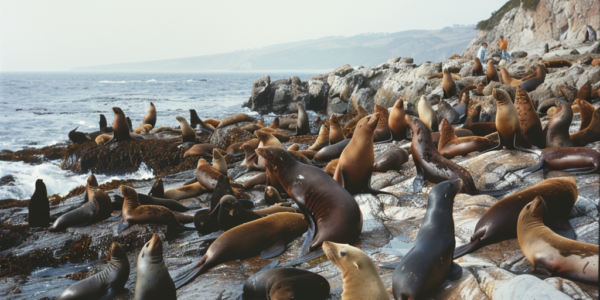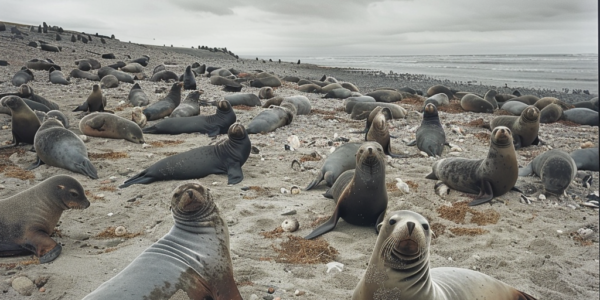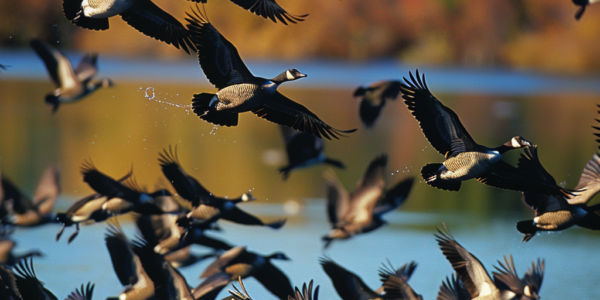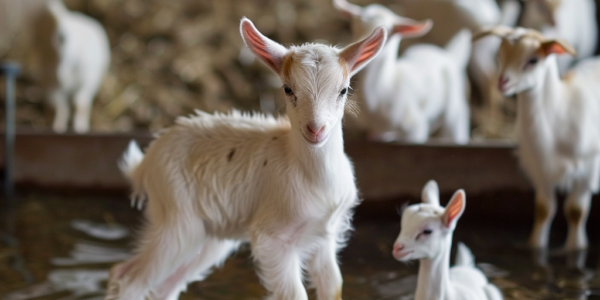Bird Flu Outbreak in Cattle Raises Concerns for Humans
Bird flu outbreak in dairy cattle raises concerns about potential risks to humans. Researchers are monitoring for mutations that could make the virus a threat to humans. Federal health officials suspect ‘mechanical transmission’ during milking may be spreading the virus. Genetic sequencing shows potential evolution to better replicate inside mammals, raising concerns about the virus evolving to infect humans more easily.
Health’s Weekend Read: Solar Eclipse Eye Safety, Bird Flu Warnings, and More
Stay informed with the latest health news from Fox News Digital, covering topics such as solar eclipse eye safety, bird flu warnings, cancer prevention, and personal stories of triumph over adversity. Learn about the potential eye damage from staring at the sun, the risk of a future bird flu pandemic, the significance of Cancer Prevention and Early Detection Month, and how one husband is using AI to combat colon cancer after the loss of his wife.
Bird Flu Outbreak Causing Deaths of Thousands of Seals and Sea Lions Worldwide
An ongoing bird flu outbreak has led to the deaths of tens of thousands of seals and sea lions worldwide, causing economic losses at poultry farms and harming wild birds. The outbreak, which began in 2020, has resulted in the deaths of millions of domesticated birds and wildlife populations. While health officials do not consider the virus a threat to humans, experts have cautioned that the continued spread of bird flu could elevate the risks to humans. Researchers have observed the impact of the virus on seals and sea lions in various regions, including the northeastern state of Maine and the South American nations of Chile and Peru. The high death rates in South America have been attributed to the virus spreading rapidly among susceptible animals and species. The impact of the bird flu outbreak on the world’s seal population is a growing concern, with scientists working to understand and address the spread of the virus to protect these vulnerable marine mammals.
Bird Flu Outbreak Causing Mass Deaths in Seals and Sea Lions
An ongoing bird flu outbreak has led to the deaths of tens of thousands of seals and sea lions, causing significant harm to wildlife populations and economic losses at poultry farms. The outbreak, which began in 2020, has resulted in the deaths of millions of domesticated birds worldwide. While health officials have stated that the virus is not currently a threat to humans, experts have cautioned that its continued spread could elevate the risks to human populations. The virus has been identified in seals on both the eastern and western coasts of the United States, with at least 300 seals succumbing to bird flu in New England and smaller numbers in Washington state’s Puget Sound. South America has also been severely affected, with over 20,000 sea lions perishing in Chile and Peru, along with thousands of elephant seals in Argentina. The virus, which can be controlled in domesticated animals, spreads rapidly among wildlife and ocean mammals.
Vietnam Reports First H5N1 Avian Flu Death Since 2014
Vietnam’s health ministry confirms 21-year-old college student in Khanh Hoa province has died from H5N1 avian flu infection, with no other cases detected among the patient’s contacts. FDA grants emergency use authorization for Invivyd’s monoclonal antibody, pemivibart (Pemgarda), for prevention of COVID-19 in immunocompromised patients.
Rising Egg Prices and the Impact of Avian Influenza
The cost of eggs has doubled since 2020, driven by factors such as increased demand around Easter, inflation, and the impact of avian influenza on hen populations. Avian influenza has led to a reduction in the number of hens producing eggs, resulting in a decrease in supply and driving up the average cost of a dozen eggs from $1.50 in 2020 to $4.20 in 2023. Poultry operations are vulnerable to avian influenza outbreaks, further constraining the supply of eggs. Farmers in central Texas have been affected by the surge in demand and escalating price of animal feed, leading to increased production costs and higher egg prices. Despite the challenges, local farmers remain committed to meeting customer needs and keeping costs as low as possible.
Sick Cows Test Positive for Avian Flu in 2 States
Sick cows in Texas and Kansas have tested positive for highly pathogenic avian flu, causing concern within the agriculture industry. Despite this, the USDA reassures that there are no concerns regarding the nation’s milk supply or threat to human health, as dairies are required to send only milk from healthy animals into processing for human consumption.
Outbreak of H5N1 Bird Flu in Burkina Faso
Learn about the recent outbreak of H5N1 bird flu in Ouagadougou, Burkina Faso, and the history of bird flu outbreaks in Africa. Virologist Daniel Oluwayelu explains what bird flu is, how it spreads, and its potential impact on humans and animals.
First Detection of Highly Pathogenic Avian Influenza in Livestock in the United States
The Minnesota Board of Animal Health (MBAH) has reported the first detection of highly pathogenic avian influenza (HPAI) in livestock in the United States. The virus was found in a baby goat on a farm where an outbreak had recently been identified in poultry, marking the first instance of HPAI in livestock in the country. The detection raises concerns about the potential impact on animal health and the need for enhanced surveillance and biosecurity measures to prevent further spread of the virus.
UK Health Authorities Advise Social Distancing from Wild Birds Amid Concerns of Potential Pandemic
Amid concerns about another potential pandemic, UK health authorities advise maintaining social distancing from wild birds to lower the risk of bird flu transmission to humans. The UKHSA recommends a two-meter distance from birds and emphasizes the importance of adhering to recommended distancing measures. With the current shortage of bird flu vaccines, preventative measures and surveillance are crucial for preventing and controlling zoonotic diseases.










